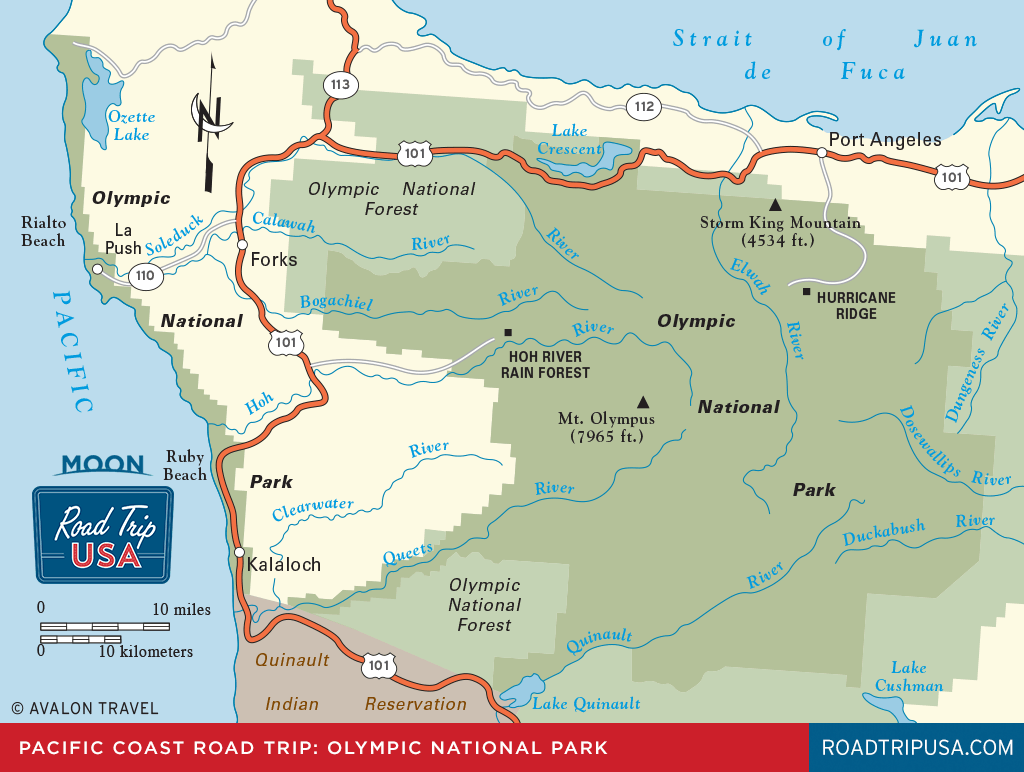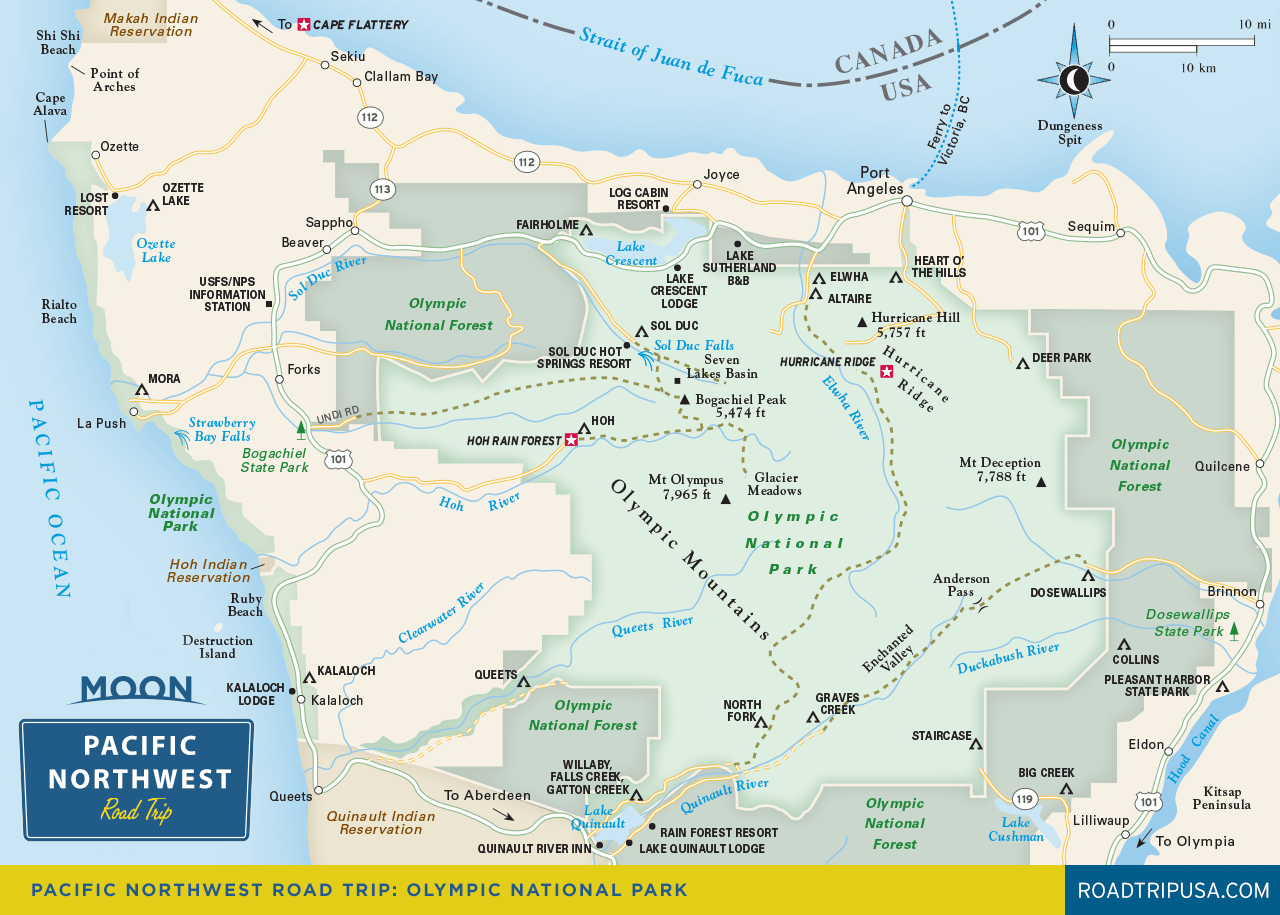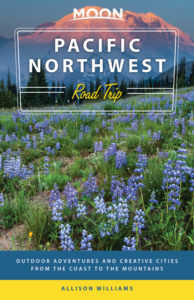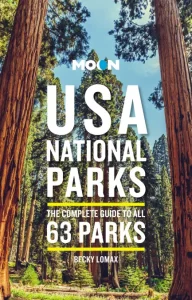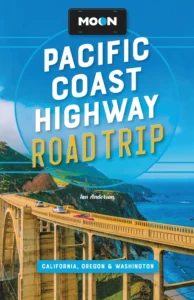Olympic National Park
Olympic National Park Planning
Olympic National Park, in the heart of the Olympic Peninsula, is a diversely beautiful corner of the country, combining features of Maine’s rocky coast and the snowcapped peaks of the Rocky Mountains with the unique rainforests covering the park’s Pacific coastal valleys. The rugged, nearly million-acre landscape, ranging from rocky shores to impassably dense forests, resisted exploitation and development until the turn of the 20th century, when local conservationists persuaded Teddy Roosevelt to declare much of the peninsula a national monument, a movement that eventually resulted in the establishment of Olympic National Park in 1938.
There are no roads and few trails across the peninsula, so you have to choose your points of entry depending upon what you want to see. The different areas of Olympic National Park are covered in the surrounding pages, but the most popular part of the park is Hurricane Ridge, which rises high above Port Angeles and offers great views of the silvery peaks and the many glaciers that flank them. (The wildflowers can be spectacular in late spring.)
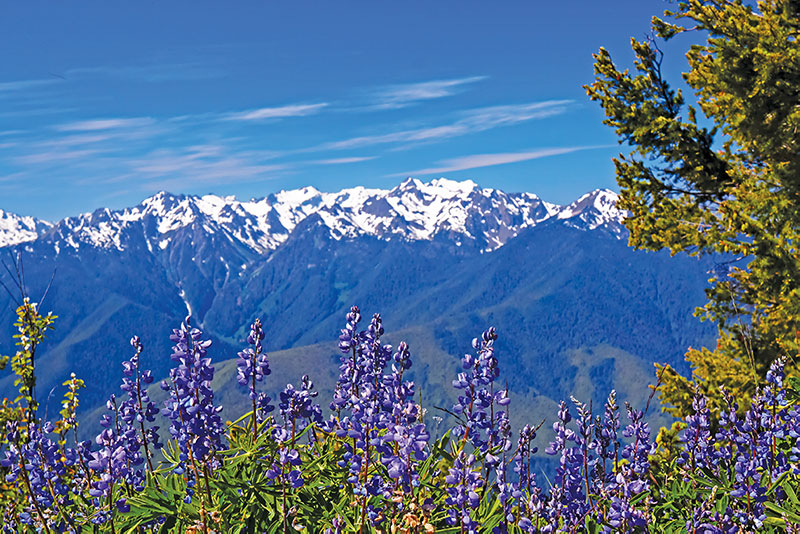
At the northwestern corner of the park, Lake Crescent sits serenely amid the forests and peaks, while on the western slopes, the temperate rainforests of the usually wet and rainy river valleys hold some of the world’s largest trees, all draped with a thick fabric of mosses. At the western edge of the peninsula, the almost completely undeveloped Pacific Ocean coastline, added to the park in 1953, offers miles of sandy beaches and rocky headlands, littered only with driftwood logs and vibrant tide pools.
Lake Crescent
One of the most idyllic spots in the entire Pacific Northwest, the fjord-like Lake Crescent, over 11 mi (17.7 km) long and some 624 ft (190 m) deep, lies right alongside two-lane US-101, just 18 mi (29 km) west of Port Angeles. The placid surface reflects the clouds and surrounding peaks, including 4,534-ft (1,382-m) Mt. Storm King. To appreciate the tranquil beauty, rent a rowboat from the Lake Crescent Lodge and float around under your own steam. Starting from the lodge, a popular mile-long hike follows a well-maintained nature trail up to the delicate cascade of 90-ft (27.4 m) Marymere Falls, while along the north shore an abandoned railroad grade is open to hikers and mountain bikers.
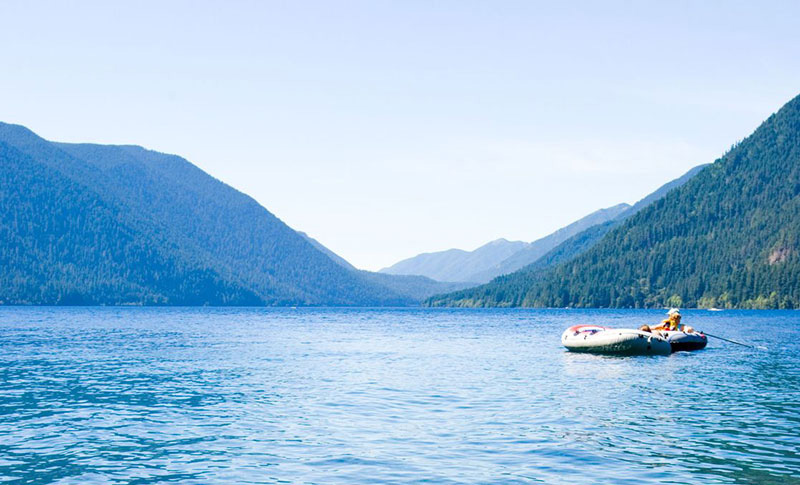
Incomparably situated along US-101 on the lake’s southeast shore, Lake Crescent Lodge (888/896-3818, open April-Jan. only, except for the Roosevelt Fireplace Cabins, open on the weekends, $112 and up) was originally built in 1915 and has been hosting visitors ever since. Fairly rustic rooms are available in the old lodge, which also has a cozy dining room. Other accommodations are available in the adjacent cabins and motel, although the whole place is booked solid on summer weekends, so reserve as early as you can. In the forested hills above US-101, Sol Duc Hot Springs Resort (888/896-3818, $191 and up) has family-friendly cabins and a restaurant set around a swimming pool and natural hot spring (around $15 for nonguests).
Olympic National Park Travel Maps
